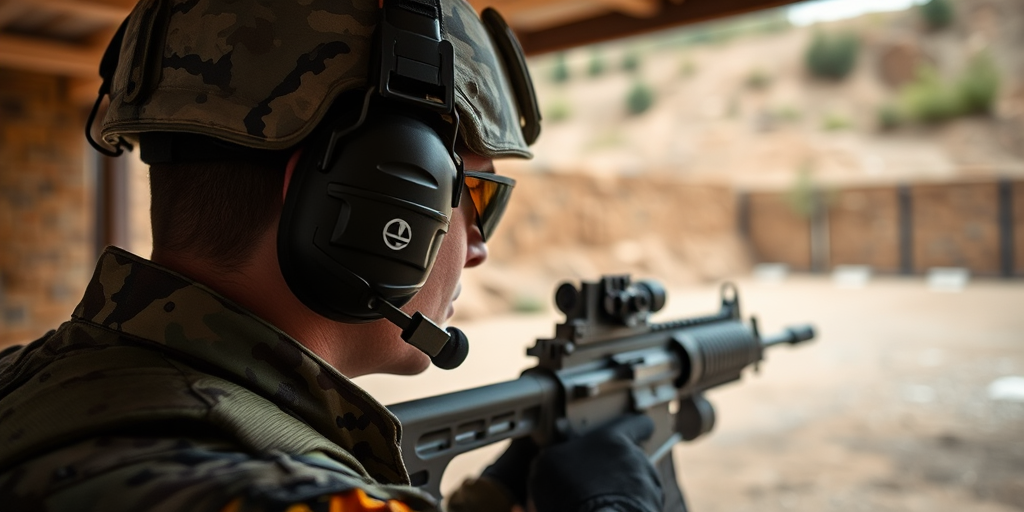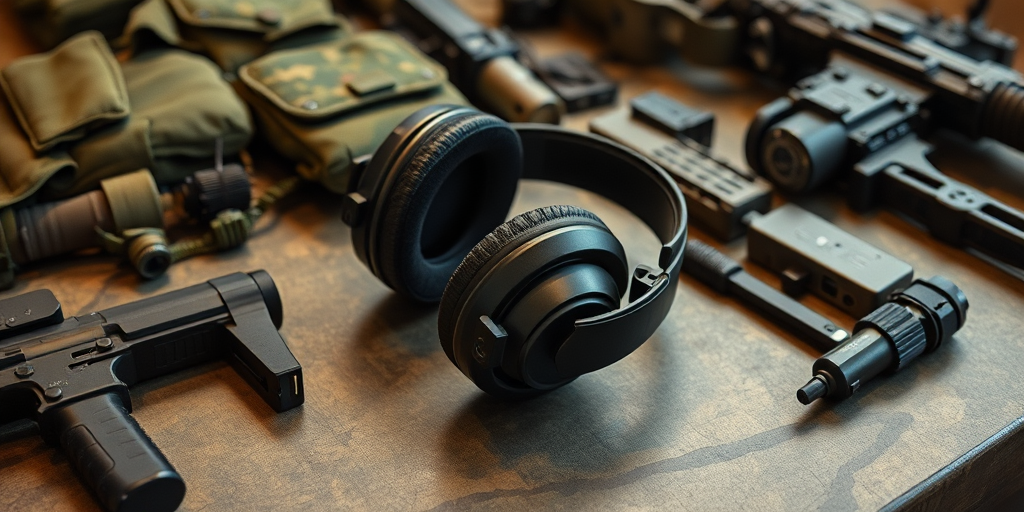Are you willing to risk compromised hearing during high-decibel operations? Tactical ear protection isn’t just a convenience—it’s a critical shield in both range and field environments. Our guide breaks down the clash between passive and active systems, exposing the technical nuances and tactical enhancements that matter most. By illustrating performance metrics and practical evaluations, we empower you to navigate from budget-friendly options to advanced devices with Bluetooth connectivity and integrated LED flashlights. Embrace superior auditory defense and transform your operational edge with precision-engineered insights.
Evaluation and Testing Methodologies for Tactical Ear Protection

Evaluation involved rigorous field and range tests to measure the effectiveness of each device as a high-performance auditory defense. Experienced shooters, military personnel, and trainers conducted assessments of Noise Reduction Ratings (NRR), comfort during extended wear, and battery performance in active models. These evaluations ensured that the field sound reduction gear performed reliably under diverse operational conditions and harsh environments.
Testing criteria focused on ease of use, durability, and tactical enhancements. The methodology considered how seamlessly each unit integrated into demanding field operations, emphasizing reliable battlefield decibel control under repetitive high-intensity impulses. For active systems, battery longevity was scrutinized along with additional features such as integrated LED flashlights that contribute to modern combat noise reducers. Evaluators analyzed these features to establish that the overall design maintained outstanding performance without sacrificing user comfort or operational efficiency.
Q: What key factors determine effective tactical ear protection?
A: Effective protection hinges on measurable decibel attenuation, consistent battery performance, robust durability, and ergonomic design. These factors are crucial when devices are evaluated as high-performance auditory defense units.
Operational testing confirmed that devices not only deliver precise noise reduction ratings but also ensure usability in field conditions. The integrated benchmarks and tactical features were critical in differentiating between models. This methodical approach provides clear, actionable insights for selecting protective gear that meets the demanding requirements of both controlled ranges and dynamic, real-world environments.
How to Choose the Best Tactical Ear Protection for Range & Field

When selecting tactical ear protection, start by comparing active versus passive systems. Active devices digitally enhance ambient sounds while still suppressing harmful levels, whereas passive models focus solely on noise reduction. This fundamental difference in operation is critical for decision-making based on your specific operational needs.
What is the most critical factor in choosing tactical ear protection?
Answer: Noise Reduction Ratings (NRR).
A precise answer: NRR directly measures the effectiveness of the device in dampening decibels, ensuring that operators are shielded from damaging sounds during combat training or at the range. More detailed considerations include how consistently the NRR performs under both dynamic field conditions and controlled environments.
Battery compatibility is another key element, especially for active systems. Ensure that the battery type and performance align with your operational expectations. Devices using AAA or AA batteries must offer reliable power output for extended missions. Similarly, Bluetooth functionality can be advantageous, enhancing communication and allowing for music or phone call capabilities during less critical stages of an operation.
Integration with other tactical gear, such as helmets or communication systems, further influences your decision. Ergonomic design and overall comfort for prolonged use are vital; discomfort can impede performance during long training sessions or field operations.
- Noise Reduction Ratings (NRR)
- Battery compatibility and performance
- Bluetooth and digital capabilities
- Ergonomic design and long-wear comfort
Thorough evaluation of these criteria provides a step-by-step guide to selecting the best tactical ear protection devices that meet field-tested safety technology demands and advanced suppression device standards.
Final Words
In the action, this article dissected the essentials of tactical ear protection for both range and field applications.
We examined technical differences between passive and active systems, detailed rigorous testing, and compared a range of models from budget-friendly to premium.
Our review highlights how performance benchmarks and practical evaluations merge to assist in choosing the right device.
Every aspect, from battery life to comfort in prolonged use, supports our commitment to informing your gear selections.
Embrace the insights provided by Tactical Ear Protection: Our Top Picks for Range & Field and make empowered decisions in your tactical endeavors.
FAQ
What ear protection offers the best Noise Reduction Rating (NRR) for shooting?
A professional-grade NRR of 31-33 decibels provides optimal protection for shooting. High-end electronic earmuffs from manufacturers like Peltor and Howard Leight consistently deliver this level of protection.
How do active vs. passive ear protection compare for shooting?
Active ear protection amplifies ambient sounds while blocking harmful noise levels, allowing for communication and situational awareness. Passive protection blocks all sounds consistently without requiring batteries.
Are electronic earmuffs worth the investment for range shooting?
Electronic earmuffs offer superior functionality for range shooting by maintaining situational awareness and communication while protecting against gunfire. The enhanced features justify the higher price point.
What’s the minimum NRR rating needed for safe shooting?
An NRR rating of at least 22 decibels provides the minimum protection required for most shooting scenarios. However, ratings of 28+ offer optimal protection for high-caliber firearms.
Can you combine earplugs with earmuffs for shooting?
Double protection using both earplugs and earmuffs can provide up to 36dB of noise reduction. This method is particularly effective for indoor ranges or when shooting large caliber firearms.
How long do batteries typically last in electronic ear protection?
Quality electronic ear protection typically provides 150-300 hours of continuous use with standard AA or AAA batteries. Premium models feature auto-shutoff functions to extend battery life.
Are Bluetooth-enabled ear protection systems reliable for range use?
Modern Bluetooth-enabled ear protection systems maintain consistent noise reduction while allowing audio streaming and communication capabilities. The technology doesn’t compromise protective qualities.
